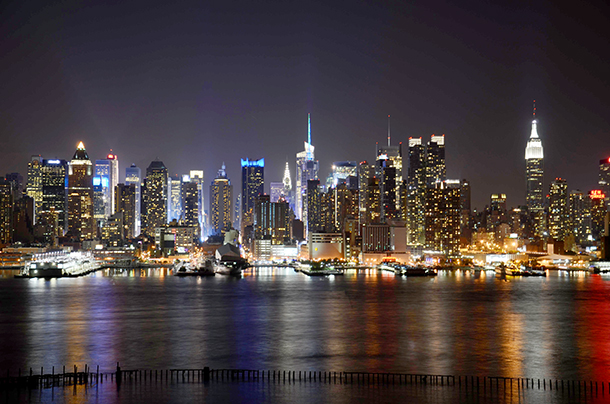Both energy efficient public lighting and increased network coverage are necessities for densely populated cities around the world. Now Philips and Ericsson have jointly come out with a solution that solves both these issues – LED street light poles that can house ‘small cells’.
Announced at the Mobile World Congress held in Barcelona, this innovative new model allows city officials to offer space within lighting poles for mobile broadband infrastructure. The concept, termed as ‘Zero Site Solution’ by Ericsson, is so called because mobile network providers will not have to build additional sites in order to improve 3G and 4G coverage.
How does it work?
This is essentially a ‘lighting-as-a-service’ model, with Philips offering LED street lighting poles that will accommodate mobile telecom equipment supplied by Ericsson. Different mobile operators can rent space in these lighting poles, thereby improving their data coverage. This makes the up-front installation cost and recurring maintenance cost of the lighting poles much more affordable.
The President and CEO of Philips, Frans van Houten, believes that this model demonstrates the powers of light beyond illumination and allows city authorities to preserve existing budgets while improving the urban living conditions.
Hans Vestberg, the President and CEO of Ericsson, said that the ‘Zero Site’ solution allows people to succeed in this networked society by enabling them to stay connected wherever they are. According to him, internet connectivity is a top factor that people look for in the city. In fact, it is estimated that mobile data traffic will grow ten times by the year 2019.
The advantages
The benefits of the smart street lighting technology are numerous:
- Benefits to city authorities: LED street lights offer an energy saving of 50-70% over conventional street lights. When smart controls based on environmental and other factors are also included, the savings can be as much as 80%. Sensors can also be embedded in these street lights, which give valuable insight into traffic patterns. LED lights also last much longer, have a more sustainable design process and need substantially less annual maintenance.
With all these benefits, the main reason which stops the authorities from making the switch is the initial investment and additional infrastructure requirements. With the new model, LED street lights will pay for themselves in an accelerated timeframe. The Philips street lamps will be available in multiple heights (8-12m) and colour options to suit the cityscape.
- Benefits to mobile operators: With city populations around the world increasing by 7500 people every hour, the demand for data communications and better connectivity is increasing. In order to keep up with this demand, providers will need to build three times more cell sites or towers. The present-day large cellular towers are no longer feasible for densely populated areas as network site acquisition becomes a stumbling block.
‘Small cells’, or distributed cellular base stations is an emerging technology critical for extending network coverage and capacity in crowded urban areas. By using existing street light poles, operators can ensure optimal coverage with very less visual impact and clutter.
Here, the Remote Radio Units (RRUs) and antennas are housed in the top of the pole while the other essentials like the remote site controller, power supply, battery etc. are located in an underground chamber.
- Benefits to city residents: The residents of the city can enjoy the benefits of wider mobile broadband coverage in addition to safer, better-lit streets. Also, the white light of LEDs is preferred by most city dwellers over the yellow-tinged glow of traditional street lamps, according to a study conducted by The Climate Group.
Our team at Everest Electrical Services always appreciate new technologies that combine energy efficiency, sustainability and cost-effectiveness. We follow these principles for all our electrical jobs in Sydney’s North Shore and Northern Beaches.


